Bastion
LQ: 9.15
Recommended Age: 10+
Skills Used: Planning, Working Memory, Mathematics, Reading
Braid is a story-driven puzzle-platformer in which you play as the character Tim, a love-struck young man on a journey to rescue his Princess from an evil knight. Taking control of time itself in order to traverse the game’s puzzling landscapes, Tim must collect puzzle pieces which help guide him ever closer to reaching the Princess. As Tim’s story is unraveled throughout the game, puzzles become more and more difficult to complete, often requiring significant planning and recollection in order to find a solution. Braid‘s story revolves around mature themes like love and relationships, but contains no inappropriate content. Gameplay is challenging, and features minimal cartoon violence. One instance of strong language occurs at the end of the game. Due to these characteristics, Braid is recommended to players ages 9 and up.
Braid is a great educational game for practicing Planning, and Working Memory Skills. We have also identified it as a particularly good choice for children with ADHD. Braid is available for PS3, Xbox 360, PC and Mac.
Recalling and retaining information while working.
In Braid, players must collect multiple puzzle pieces scattered throughout the world by manipulating time. Puzzles require players to complete complex multi-step problems by rewinding time and altering the environment around them. Each world introduces new gameplay mechanics, like the ability to rewind time, objects that are immune to being rewound, and time dilation (the slowing of time). As puzzles become more complex, the player must recall previous actions and the effects they had on the game world, memorizing what's happening in the environment around them and using that information later in the level. f
Developing a systematic approach for setting and achieving goals.
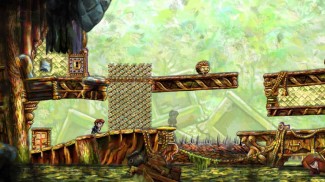
Most puzzle pieces in Braid will not be captured on the player's first attempt, as gathering a puzzle piece requires players to carefully plan their actions before taking even one step. Because each action taken by players commonly happens again, but in reverse, even the smallest movements can alter the flow of time and layout of the world itself. Players must therefore prioritize their actions and carefully determine how to reach their goal. If they do not take the time to brainstorm solutions and think ahead, they will have a very difficult time solving Braid's later puzzles and discovering the story of Tim's past.
Use this Play Together guide to learn how you can help your child turn Braid play time into a positive learning and relationship-building experience. To learn more about why playing games with your children is so important, check out our Science of Play page.
Take a minute to talk with your child about how the Working Memory and Planning Thinking Skills work, and why they are important for success in school and at home.
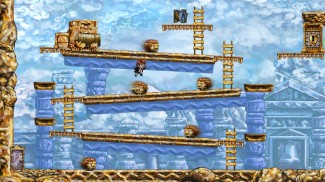 While playing Braid, take your time to get a good feel for the time controlling mechanic and its effects on Tim and his world. Because Braid is a puzzle game the enemies in it shouldn't be thought of as a threat, but rather an obstacle (or sometimes a helpful tool) that stand in the path to the puzzle pieces. Encourage your child to pace herself and to think broadly when facing particularly difficult puzzles. Braid's puzzles can become very complex, especially toward the end of the worlds, and it can be very beneficial to your child to have a second person to make suggestions, give another perspective, and to help her work out her own solutions. Try to complete the following gameplay goals to get the most out of your Briad experience:
While playing Braid, take your time to get a good feel for the time controlling mechanic and its effects on Tim and his world. Because Braid is a puzzle game the enemies in it shouldn't be thought of as a threat, but rather an obstacle (or sometimes a helpful tool) that stand in the path to the puzzle pieces. Encourage your child to pace herself and to think broadly when facing particularly difficult puzzles. Braid's puzzles can become very complex, especially toward the end of the worlds, and it can be very beneficial to your child to have a second person to make suggestions, give another perspective, and to help her work out her own solutions. Try to complete the following gameplay goals to get the most out of your Briad experience:
Gameplay Goals:
After completing the suggested gameplay goals, take a minute to reflect with your child on how she used her Working Memory and Planning skills in Braid.
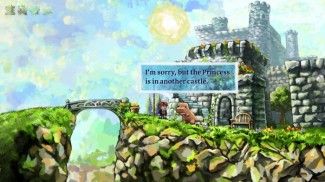 Discuss with your child how remembering her character's actions when reversing time was crucial for being able to collect puzzle pieces.
Discuss with your child how remembering her character's actions when reversing time was crucial for being able to collect puzzle pieces.Our Make it Work activities are designed to transform your child’s gameplay to real-world improvements in thinking and academic skills. If you’re just getting started with LearningWorks for Kids, we suggest you try them all to find which are the best for you and your child.
Read over the pages for Working Memory and Planning. Then take some time to introduce these thinking skills to your child. Explain that:
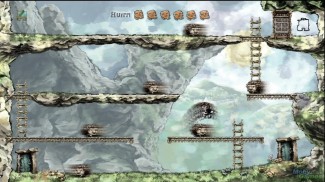
Strategies used to help with reading comprehension can also help with Working Memory concerns.
Help children to preview the steps needed to complete basic tasks such as getting ready for bed. Encourage them to predict what will happen if they miss a step. Then help them connect what they need to do to their previous knowledge of accomplishing these tasks. Ask them to paraphrase and summarize directions you have just given. Each of these techniques reflect some of the strategies that are often used with diverse learners to teach them how to use their previous memories and establish thinking skills to guide and direct their behaviors. If you are thinking about these strategies in regard to improving memory, you might also want to talk to your child’s classroom or resource teacher for more ideas about ways to try them.
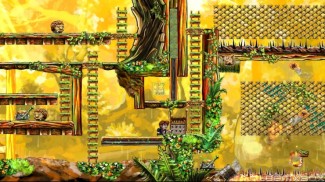 Anticipate the future.
Anticipate the future.
Demonstrate the need to plan ahead based upon schedules or upcoming events. If the lawn needs to be cut, discuss how your child needs to start the job in time so she can finish before dark or before it rains. Help your child to see parallel situations such as getting homework done before cousins visit or planning to shop for supplies to complete a project before the store closes. Use large, visual calendars for planning. It is particularly helpful to younger children to place the calendars in their rooms and decorate them on their own. Use visual cutouts to represent activities. For example, children may wish to use a digital photo of a baseball to remind them of baseball practice, or a violin or other instrument to remind them of music lessons.
 Braid's engaging gameplay and beautifully crafted environments are matched by a deep, somewhat ambiguous story which is revealed in pieces of text introduced to players periodically throughout the journey. Before entering each world players can choose to read several short excerpts from Tim's story. Each world's mechanics reflect the context of these texts, covering topics such as forgiveness, regret, and devotion. Each passage read by will reveal new insights into Tim's troubled past, allowing readers to slowly formulate their own idea of who the characters are and why they are here. After completing Braid and unlocking the epilogue, players will be left to interpret Tim's story their own way.
Braid's engaging gameplay and beautifully crafted environments are matched by a deep, somewhat ambiguous story which is revealed in pieces of text introduced to players periodically throughout the journey. Before entering each world players can choose to read several short excerpts from Tim's story. Each world's mechanics reflect the context of these texts, covering topics such as forgiveness, regret, and devotion. Each passage read by will reveal new insights into Tim's troubled past, allowing readers to slowly formulate their own idea of who the characters are and why they are here. After completing Braid and unlocking the epilogue, players will be left to interpret Tim's story their own way.
 Braid is a game that requires careful planning, and can be a great tool to help children diagnosed with ADHD to exercise thoughtfulness and problem-solving. The ability to recall and apply various bits of in-game information is also needed, as the game's rules and mechanics constantly expand throughout the game. This kind of gameplay helps players practice Working Memory, a skill that can be beneficial for children dealing with the challenges of ADHD to exercise.
Braid is a game that requires careful planning, and can be a great tool to help children diagnosed with ADHD to exercise thoughtfulness and problem-solving. The ability to recall and apply various bits of in-game information is also needed, as the game's rules and mechanics constantly expand throughout the game. This kind of gameplay helps players practice Working Memory, a skill that can be beneficial for children dealing with the challenges of ADHD to exercise.
All membership plans come with full access to our entire suite of tools learning guides, and resources. Here are a few of the ones we think you’ll like the most: